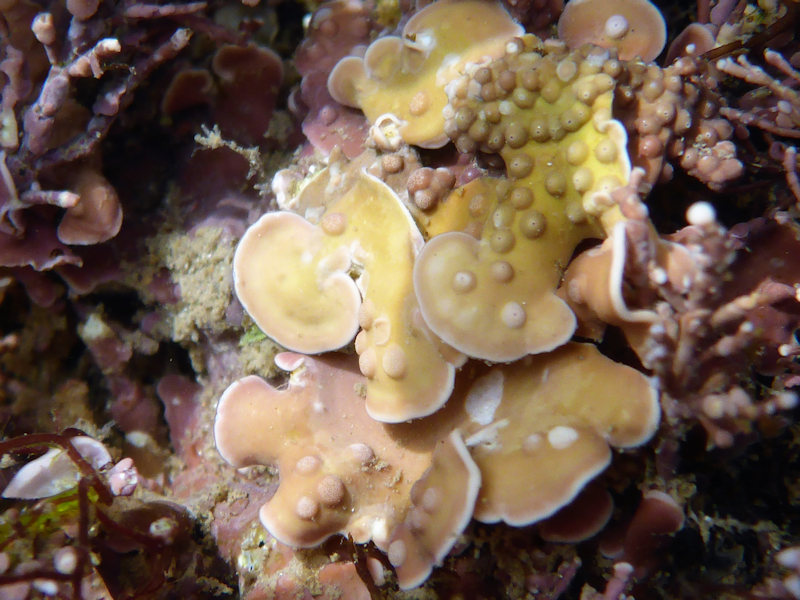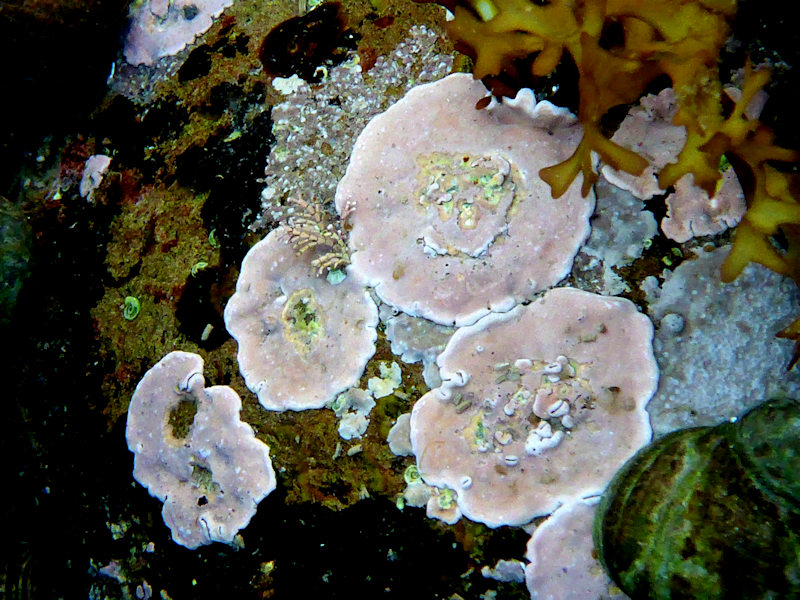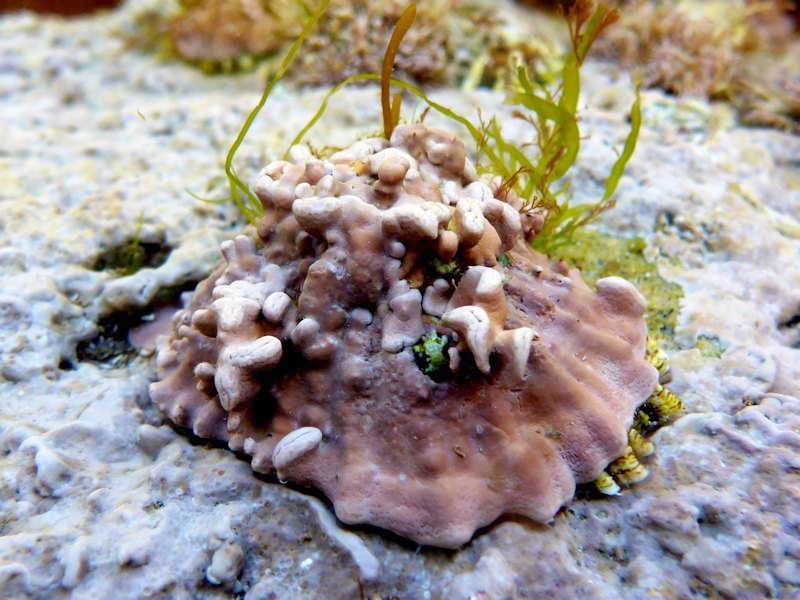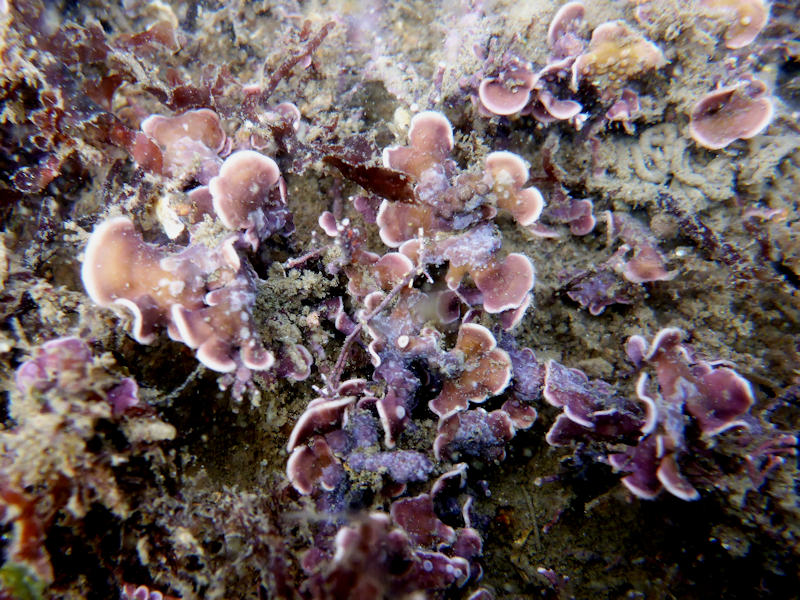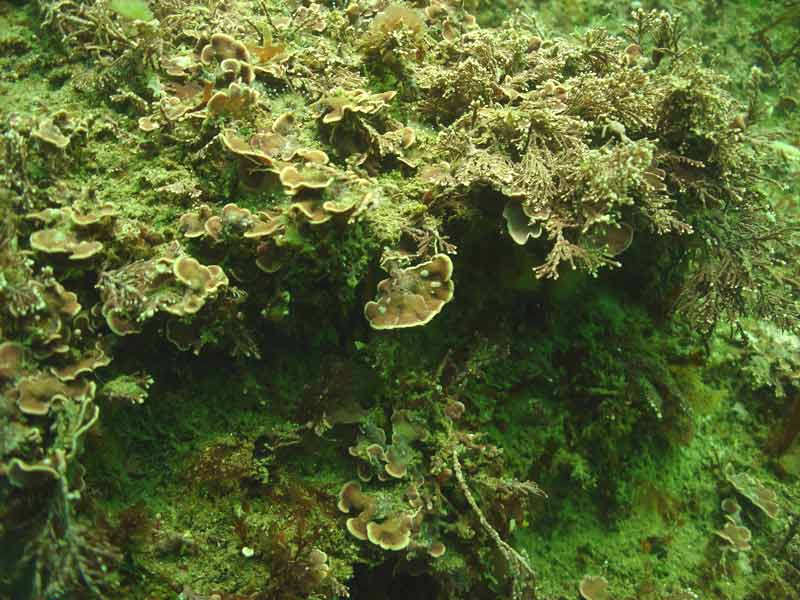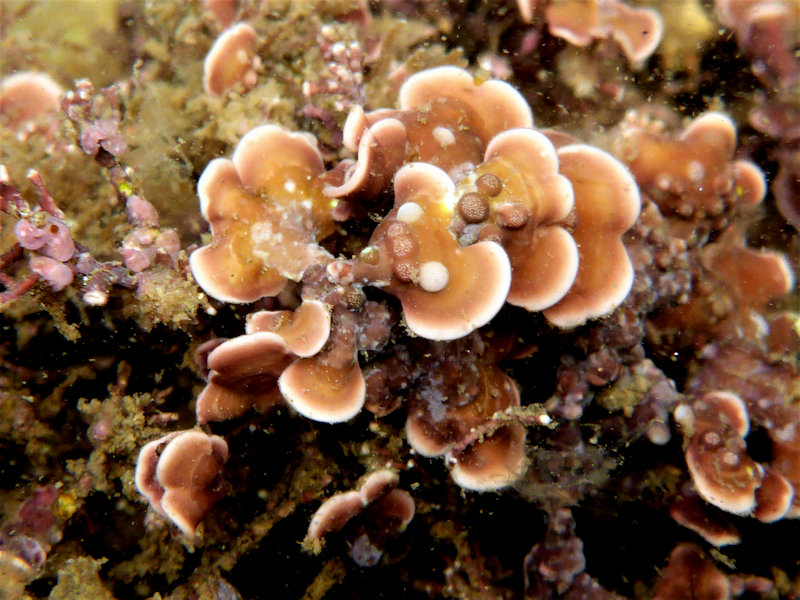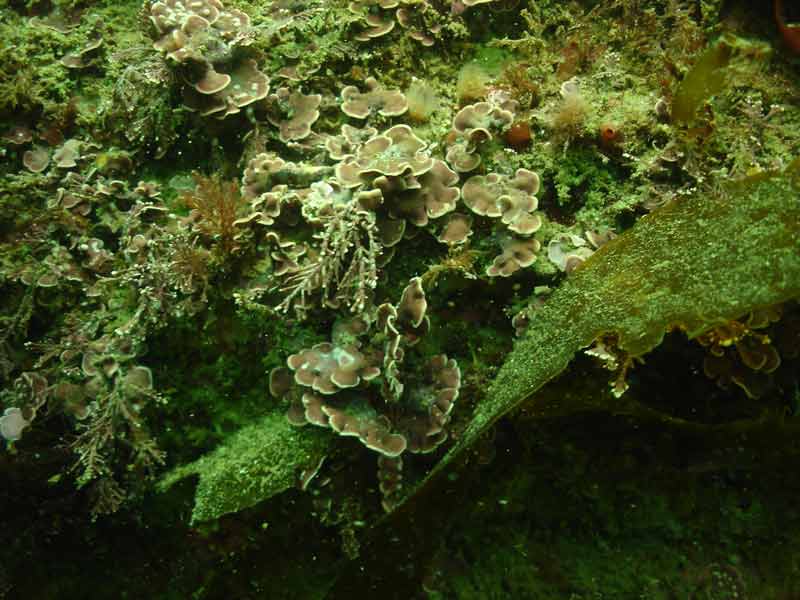Pink plates (Mesophyllum lichenoides)
Distribution data supplied by the Ocean Biodiversity Information System (OBIS). To interrogate UK data visit the NBN Atlas.Map Help
| Researched by | Eliza Gibson-Hall | Refereed by | Admin |
| Authority | (J.Ellis) Me.Lemoine, 1928 | ||
| Other common names | - | Synonyms | Corallium cretaceum lichenoides , Lithophyllum agariciformi , Lithothamnion agariciforme , Lithothamnion lichenoides , Lithothamnion lichenoides var. agariciformis , Nullipora agariciformis , Nullipora lichenoides , Spongites agariciformis |
Summary
Description
Mesophyllum lichenoides has a thin, brittle, calcified thallus forming flattened lobes. The lobes are pale pink to a dark purple in colour with white edges around each lobe. The lobes are thin ( <1 mm thick) and 2-3 cm in diameter, with a stiff/chalky texture. The overlapping lobes may form large masses if grown collectively. The lobes (fronds) are semi-circular and often have small, wart-like structures (1.5 mm). These are the reproductive structures known as conceptacles. Once spores are released from the conceptacles, small rings are left behind on the lobes. In the sunlight, some areas may become bleached and turn yellow.
Recorded distribution in Britain and Ireland
Recorded along the south coast of Britain from Portsmouth to Penzance, including the Isles of Guernsey, Jersey and Hugh Town. Records continue up the north coast of Cornwall and Devon. In Wales, it is recorded on the coasts of Swansea, Pembrokeshire, Aberaeron, the Llyn Peninsula and Holyhead. In Scotland, recorded along the west coast including the Hebrides. Recorded along the north-east coast and mid-west coast of Ireland with unconfirmed records from the Isle of Man.
Global distribution
Recorded in parts of the British Isles, above the Netherlands and on the west coast of Portugal. Recorded along the coast of southern Spain near Alicante, Málaga, L’Escala and Palma with a record from Oran, Algeria. Also recorded in the Mediterranean along the south coast of Sicily and west coast of Turkey.
Habitat
Lower littoral pools and sublittoral fringes mostly epiphytic on Coralline officinalis in tide pools but also epilithic, epizoic and unattached.
Depth range
-Identifying features
- Thin, brittle, flattened lobes <1 mm thick and 2-3 cm in diameter
- Lobes are semi-circular with wart-like structures (conceptacles)
- Pale pink to dark purple in colour with white edges around each lobe
- May become bleached in the sunlight
Additional information
Reproduction takes place in both winter and spring with the release of spores from the wart-like conceptacles. It may be confused, in western Ireland, with the stone rose maerl, Lithophyllum dentatum. This is because Mesophyllum lichenoides can sometimes form unattached balls. However, Mesophyllum lichenoides is a lot thinner than Lithophyllum dentatum.
Listed by
- none -
Bibliography
Bunker, F.StD.P., Brodie, J.A., Maggs, C.A. & Bunker, A.R., 2017. Seasearch Guide to Seaweeds of Britain and Ireland (Second edition). Plymouth: Wild Nature Press.
Guiry M.D & Guiry, G.M., 2018. Mesophyllum lichenoides - AlgaeBase. World-wide electronic publication, National University of Ireland, Galway. Available from: http://www.algaebase.org/search/species/detail/?species_id=112
Hiscock, S., 1986b. A field key to the British Red Seaweeds. Taunton: Field Studies Council. [Occasional Publication No.13]
Kubala. S., Ziemski. F., Verlaque. M. , Lamare. V., 2016. Mesophyllum lichenoides (Ellis J.) M. Lemoine. DORIS. Available from: http://doris.ffessm.fr/ref/specie/779
Datasets
Citation
This review can be cited as:
Last Updated: 01/11/2018

